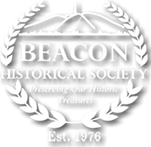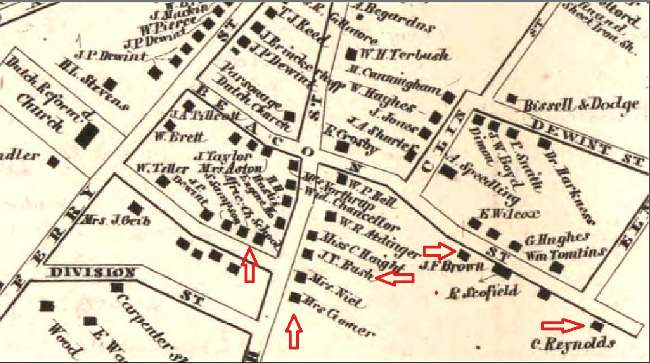Black History Month: Early History of the Local African-American Community
The roots of Beacon's earliest Black Community run through a small strip of land between North Walnut and North Brett Streets. This parcel (measuring about 50 feet by 130 feet) is the southern section of the Methodist Cemetery on North Walnut Street and for years was known as the Union Burial Ground--a cemetery paid for and owned by the African-American community in pre-Civil War Beacon (then called Fishkill Landing). Our source for almost everything we know about the cemetery is the diary of James F. Brown, the gardener for the Verplanck estate "Mount Gulian" and a former slave.
According to Brown's diary for 1851, in September Brown went among the congregation of the AME Zion Church in Fishkill Landing "to collect money to buy a burying ground for the colored people of Fishkill Landing and vicinity." On October 4, 1851, Brown writes: "Paid $65 to James Mackin (agent for the land owner, John Peter DeWindt) for the colored burying place." On October 14, the deal was sealed: "Paid all the money for the Colored Peoples Union Burying Ground to James Mackin--also chose five trustees namely Samuel Sampson, James F. Brown [himself], Edward Bush, Christian Reynolds and Samuel Gomer." On October 31, 1851, Brown writes: "J. Henry Roose was buried in the colored peoples new Burying place it being the first internment in that ground."
It is interesting to refer to the 1858 map of Fishkill Landing--a map that shows streets, houses, and house-holders names--to find the residences of these five cemetery trustees. All five owned homes in a small neighborhood block within the perimeter of South Avenue, Beacon Street, and Division Street. Also within this area was the AME Zion Church and the Colored annex of the Fishkill Landing school. Christian A. Reynolds, a trustee of the cemetery, was a teacher and principal of that annex school. The school was founded in 1857, as a "separate colored school" and operated until 1889, when it was abolished.
Back to the Union Burial Ground: in 1939, the Beacon city council considered a proposal for an Oak Street extension, connecting North Walnut and North Brett by paving through the African- American Cemetery. A deed search by Beacon surveyor G. Radcliffe Hustis revealed that the property still was owned by the aforementioned five trustees (or by now, their descendants) and therefore could not become part of Oak Street ... a close call for preserving Beacon's history. Today, this cemetery has few remaining headstones--a handful of black Civil War veterans' stones are the most recognizable. A thorough study of the origins of Beacon's Black Community is yet to be written, but when undertaken, it must begin in a cemetery ...
Photos: Looking south (today) toward the African-American Cemetery near North Walnut Street; Beacon News article from 1939, telling how we almost lost a cemetery; map of Fishkill Landing (1858), with arrows pointing to the cemetery trustees' homes.



